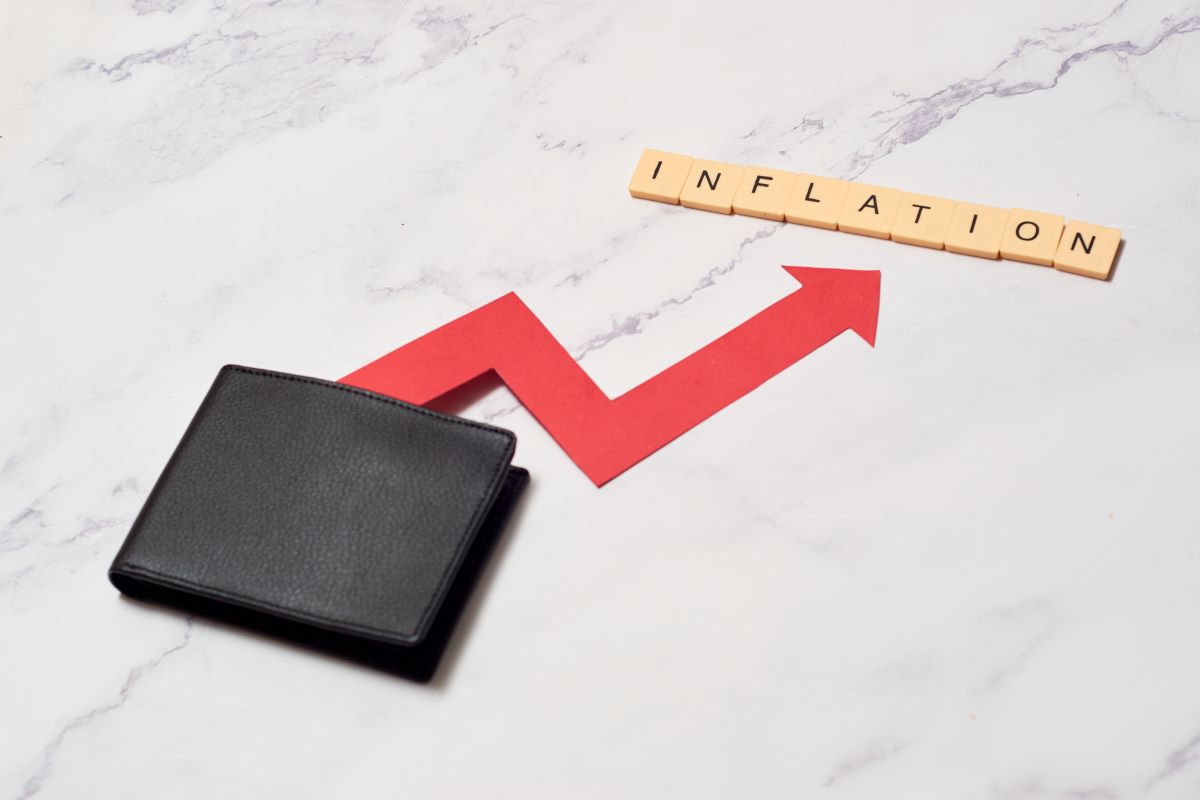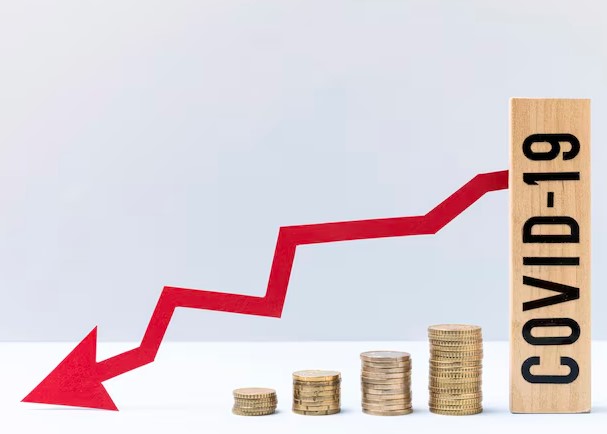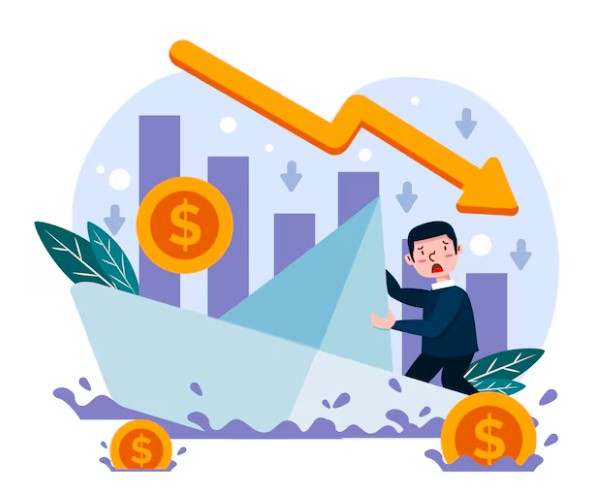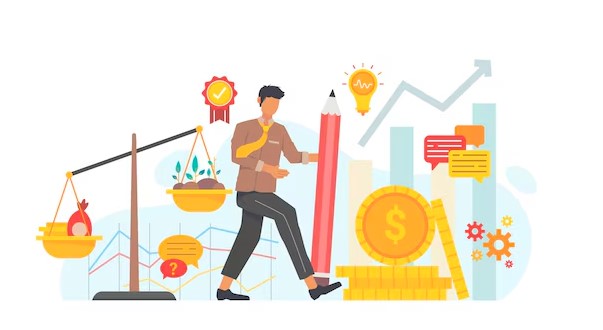Simplifying Life Insurance in India
Demand-Pull Inflation vs Cost-Push Inflation: Key Differences

Inflation determines how much costlier a set of products or services becomes over a given period. This economic phenomenon is classified into two types: demand-pull inflation and cost-push inflation.
Major causes of inflation are grouped into three broad categories: demand-pull inflation, cost-push inflation, and inflation expectations.
- In demand-pull inflation, the significant focus or cause is economic development, whereby consumers have high purchasing power and spending, and the country experiences increased net exports.
- In cost-push inflation, aggregate supply in the economy reduces. This is mainly caused by rising production costs, such as labour and raw materials.
- Consumers can also influence inflation rates by predicting the future prices of goods and services. As a result, they make economic decisions according to their market expectations, causing inflation changes.
However, economists and experts majorly focus on demand-pull inflation and cost-push inflation. There are significant differences between demand pull and cost push inflation you must know.
Keep reading to learn the differences between demand-pull inflation and cost-push inflation in further detail.
What is Demand-Pull Inflation?
Demand-pull inflation occurs when there is an escalation in demand for any particular good or service. Generally, when the increase in demand can be seen for available products in the market, their values tend to rise.
Even though a short-term discrepancy in supply and demand may not induce too much effect, sustained heavy demand impacts the nation's economy by increasing the prices of items.
The following points highlight the key features of demand-pull inflation that will help distinguish between demand-pull and cost-push inflation.
- This type of inflation occurs due to greater economic development and increased consumer spending.
- It is characterised by a massive increase in the supply of money.
In this type of inflation, the demand towards commodities becomes more than their total supply. As a result, manufacturers have no option but to upsurge the selling prices of their goods.
What Causes Demand-Pull Inflation?

As mentioned earlier, this type of inflation is the result of excess demand over the market supply. There are several causes of this inflation, which are listed hereunder.
- Growing Economy and Activities: Consumers become more confident when there is a high employment rate and more money generation. Their purchasing power increases, and they tend to buy more goods and services. As a result, the demand for goods increases, implying high prices and inflation.
- Rising Net Exports: When a country's exports are greater than imports, it means the value of the exporter's currency is diminishing. This will create more demand than usual, resulting in demand-pull inflation.
- Increased Government Spending: When government expenditure increases, there is a high chance of rising prices.
- Expectations: If businesses sense or predict inflation shortly, they tend to increase their prices. On the other hand, if consumers predict inflation in the future, they will buy more goods and services now to save money during inflation, increasing goods prices.
What is a Recent Example of Demand-Pull Inflation?

Have a look at the recent example of demand-pull inflation when the COVID-19 scare occurred. When the government guidelines were released in India, and doctors advised people to undertake precautionary measures, there was demand-pull inflation.
Before Coronavirus, the prices of surgical masks and hand sanitiser were reasonable and affordable. But as the virus broke out, people started buying these goods in high volume. As a result, the demand increased, and the supply could not match the demand.
Similar transitions can be seen after the lockdown guidelines were lifted and people were allowed to move out of their homes. Petrol and diesel prices started rising as people started travelling to their offices.
Resorts, cottages, airline tickets, the tourism industry, etc. started booming. The post-pandemic scenes led to an increase in demand for such goods and services, resulting in increased prices.
How to Control Demand-Pull Inflation?
There are many fiscal and monetary measures the government undertakes to control demand-pull inflation. Some of these measures are as follows.
- Increase Interest Rates: When there is more consumer spending, people will take more debt to purchase goods and services. They will take home loans and other debts to enhance their spending habits. However, the RBI increases the bank interest rates to counter this inflation. Through this measure, people will spend less and borrow less.
- Raise Taxes: The government can impose taxes on goods that are in high demand or are low-priced. As a result, consumers will think twice before buying a product.
- Decrease Government Spending: Another excellent way to curb demand-pull inflation is to reduce government spending, which will decrease the aggregate demand.
What is Cost-Push Inflation?

Cost-push inflation occurs when the price of certain goods and services increases due to an increase in the prices of factors of production such as raw materials, increase in production costs, higher wages, and so on. Here, the demand remains constant, but the supply of such goods falls owing to higher production costs.
Under such circumstances, manufacturers increase the prices of their products to balance the upsurge in production costs. Consequently, this increase in price puts a burden on buyers by making them pay overpriced amounts for finished products.
What are the Causes of Cost-Push Inflation?
The following section highlights the core causes of cost-push inflation.
- Decreased Purchasing Power: When production costs rise, the prices of goods also increase. As a result, consumers will not be able to spend freely. In such scenarios, their purchasing power reduces and they usually avoid spending on unnecessary goods. They instead spend on essential items and services.
- Poor Economic Growth: Cost-push inflation is often characterized by low economic growth where there is a high unemployment rate, poor investments, and low expansion plans.
- Wage-price Spiral: Due to increased production costs and rising prices, workers will demand higher pay to earn a reasonable standard of living. This will lead to businesses employing fewer workers, which will slowly lead to a wage-price spiral and greater inflation.
Why is India Facing Cost-Push Inflation?
It is an alarming question why is India facing inflation and is it demand-driven (demand-pull inflation) or supply-driven (cost-push inflation)?
For the past many years, India has been facing cost-push inflation due to a large population and a huge economic divide (the rich become richer, the poor become poorer).
It mainly occurs when there is a significant change in prices and quantity of goods produced where both the variables move in opposite directions. In other words, there is a low volume of goods produced but at an increased cost and price.
Apart from these factors, India has also seen cost-push inflation due to the Covid-19 pandemic. It led to a massive decline in demand and supply, causing unusual changes in the economy.
After the government lifted the pandemic, people got vaccinated and the aggregate demand recovered quickly. However, the supply did not match up with the pace of the demand increase. This resulted in further cost-push inflation.
Therefore, major supply chain disruptions are the primary contributors to India’s situation of cost-push inflation.
Who Benefits from Cost-Push Inflation?

Many groups benefit from cost-push inflation at some point in the inflationary process. These advantages are provided below.
- Better Pay for Workers: Increasing production costs are a significant root cause of declining aggregate supply and cost-push inflation. With these production costs, labour rates or wages tend to rise. In other words, this is good news for workers who get high wages.
- Greater Profit Margins: When production costs rise, suppliers charge unusually high prices, which may create high-profit margins for them. It is a ‘win’ situation for many businesses and shareholders.
- Improved Purchasing Power: There is an initial stage of the inflationary process where interest rates remain stagnant or constant. When these rates are not adjusted, consumers tend to purchase more and spend freely. Therefore, it contributes to economic growth for a short period.
Differences Between Demand-Pull Inflation and Cost-Push Inflation
The key differences between cost-push and demand-pull inflation are discussed below in the following table:
| Aspects | Cost-Push Inflation | Demand-Pull Inflation |
| Meaning | Cost-push inflation occurs in case there is an upsurge in the price of inputs. Consequently, manufacturers produce fewer items, decreasing the supply of items or outputs. | Demand-pull inflation is caused when the aggregate demand increases quicker than the aggregate supply in an economy. |
| Causative Factors | An increase in the price of input costs causes cost-push inflation. The monopolistic groups in society, like labour unions and firms, also play a significant role. | Demand-pull inflation is caused by monetary and real factors. |
| Policy Recommendations | To cope up with cost-push inflation, the government organises deflationary monetary policy or supply-side policies. | To deal with this scenario, governments, alongside public banks, should work together to adopt strict fiscal policies. These policies may include lessening government spending, increasing taxes, etc. |
| Driven By | Cost-push inflation is typically driven by producers. | Demand-pull inflation is primarily driven by consumers. |
| Association with GDP | Cost-push inflation is associated with a negative GDP gap since the increasing production costs diminish spending and output. | Demand-pull inflation occurs with a positive GDP gap since actual GDP exceeds its potential only if aggregate spending is progressive. |
| Prevalence | Cost-push inflation has not been too prevalent in recent times. | Demand-pull inflation takes place in most economies worldwide. |
After knowing the difference between demand-pull and cost-push inflation, here is a look at their effects on a nation's economy.
What is Mixed Demand-Pull and Cost-Push Inflation?
Many experts and economists believe that an inflationary process is a result of or involves both demand-pull and cost-push inflation. They state that inflation is caused by elements of both processes.
In other words, price changes in the economy have an impact on both aggregate demand and aggregate supply functions but at different stages and timing.
There might be a case that an increase in production costs (for example, wages) in cost-push inflation is due to the increase in prices. Similarly, while there is excess aggregate demand, consumers will spend more, and as a result, prices will rise. Eventually, it will soak up the wages.
What are the Effects of Demand-Pull Inflation?
Mentioned below are some of the common negative effects that occur during demand-pull inflation:
- Diminishes purchasing power of customers
- Increases cost of borrowing
- Causes potential impact on currency rates
- Increase spending to avoid the impact of further inflation
- Continued growth of inflation
What are the Effects of Cost-Push Inflation?
The following are the common effects seen during cost-push inflation in an economy:
- Reduction in aggregate supply
- Lessening the purchasing power of consumers
- Reducing profit margins
- Increasing unemployment
- Reduction in economic growth
From the above discussions, you can understand the difference between demand-pull inflation and cost-push inflation alongside their effects on a country's economy.
Although there is a dispute regarding which of these two factors increases the general price level in an economy, according to experts, demand-pull is the principal factor for inflation.
FAQs about Demand-Pull Inflation vs Cost-Push Inflation
What is the combination of cost-push and demand-pull inflation?
What are the best investment instruments during cost-push and demand-pull inflation in an economy?
Which factors are responsible for causing cost-push inflation?
Mentioned below are the three major factors that are responsible for causing cost-push inflation in an economy:
- Wage-Push Inflation
- Material-Cost-Push Inflation
- Profit-Push Inflation
Which factors are responsible for causing demand-pull inflation?
Just like cost-push inflation, three crucial factors are responsible for causing demand-pull inflation in an economy. They are:
- Expanding Economy
- Increased Government Spending
- Overseas Growth
How to control cost-push inflation?
What are the four types of inflation?
What is meant by the Phillips Curve?
What is Taylor's rule in economics?
What is stagflation?
What is the Fisher effect in economics?
What is the LM curve?
What is Keynesian quantity theory?
What is the impact of demand-pull inflation or cost-push inflation on the economy?
Will rising inflation make life insurance premiums go up, too?
Does inflation affect the claim payout value of term insurance?
How does inflation affect medicine prices and access to quality healthcare?
Other Important Articles Related to Inflation and Financial Planning
Important Articles About Financial Planing
Latest News
Read More
















